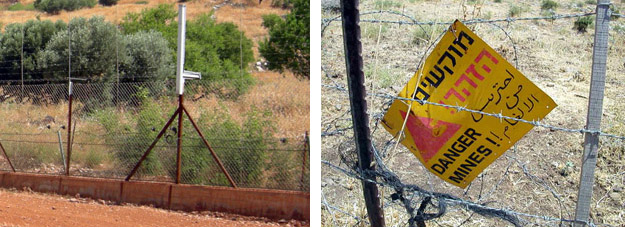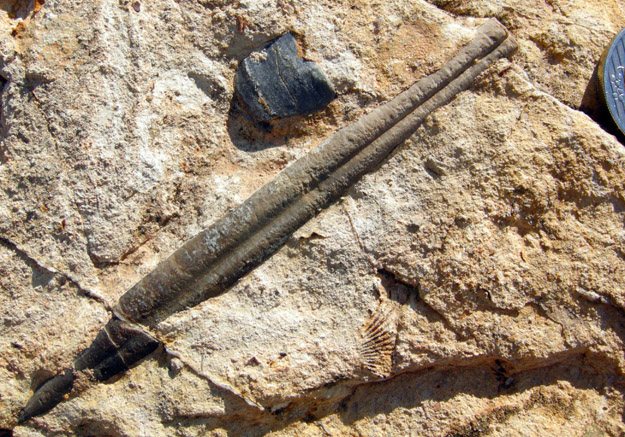 Today we could visit only one Jurassic site in the Golan. The others were in a militarily sensitive area to which we were not admitted, even after a long conversation with the commanding officer and classic geological special pleading. (“But our American guest, a famous geologist, has come thousands of miles just for these important rocks!”)
Today we could visit only one Jurassic site in the Golan. The others were in a militarily sensitive area to which we were not admitted, even after a long conversation with the commanding officer and classic geological special pleading. (“But our American guest, a famous geologist, has come thousands of miles just for these important rocks!”)
So, the fossil of the day will be a Jurassic belemnite from the top bed of the Zohar Formation. These are among the simplest of fossils (basically a calcite dart) but they are remnants of sophisticated cephalopods which are relatives of the modern squid. The fossil belemnite “guard” acted as a stiffening and weighting device inside the soft body.




It’s nice of them to translate the warning sign into English. In general, how easy is it for you to communicate with the locals? Was your “long conversation with the commanding officer” in English?
It is good that most public signs are in English, Arabic and Hebrew — especially those like “Danger of Death”! I’ve had little trouble communicating, mainly because when I start in very broken Hebrew I’m immediately answered in English (fortunately!).
We sent the oldest member of our party, Moshe Goldberg, to negotiate with the Army at the guardpost. We figured since he was a member of the Palmach (the first Israeli Defense Force) and fought in the War of Liberation (1948), the Suez Crisis (1956) the Six-Day War (1967) and the Yom Kippur War (1973), that he would at least gather some sentiment! But like militaries everywhere, the bureaucracy won. (“Come back next year with the proper papers.”)
Hi Professor Wilson! I just wanted to say that your pictures are amazing. I am sorry to hear that they wouldn’t let you see the Jurassic sites. Moshe couldn’t even get them to budge? The picture of the belemnite is really good. I see that your now in Russia. I hope that trip is going well for you too.